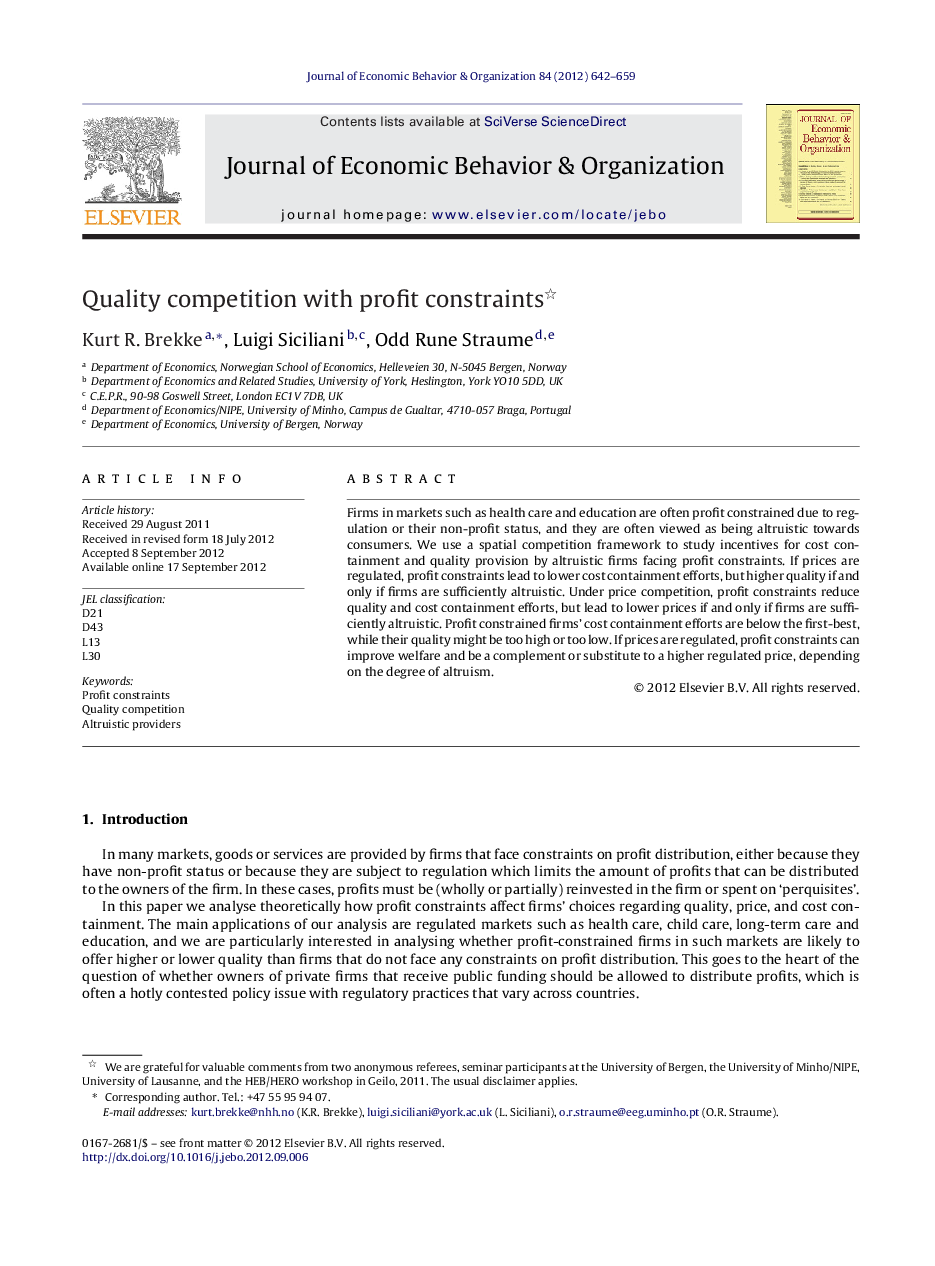| Article ID | Journal | Published Year | Pages | File Type |
|---|---|---|---|---|
| 883732 | Journal of Economic Behavior & Organization | 2012 | 18 Pages |
Firms in markets such as health care and education are often profit constrained due to regulation or their non-profit status, and they are often viewed as being altruistic towards consumers. We use a spatial competition framework to study incentives for cost containment and quality provision by altruistic firms facing profit constraints. If prices are regulated, profit constraints lead to lower cost containment efforts, but higher quality if and only if firms are sufficiently altruistic. Under price competition, profit constraints reduce quality and cost containment efforts, but lead to lower prices if and only if firms are sufficiently altruistic. Profit constrained firms’ cost containment efforts are below the first-best, while their quality might be too high or too low. If prices are regulated, profit constraints can improve welfare and be a complement or substitute to a higher regulated price, depending on the degree of altruism.
► Firms in markets such as health care and education are often profit constrained due to regulation or non-profit status. ► A spatial competition model is used to study incentives for cost efficiency and quality by altruistic firms facing profit constraints. ► We find that profit-constraints always lead to lower cost efficiency, while the effects on quality and prices are ambiguous. ► If prices are regulated, profit constraints can improve welfare and be a complement or substitute to a higher regulated price, depending on the degree of altruism.
